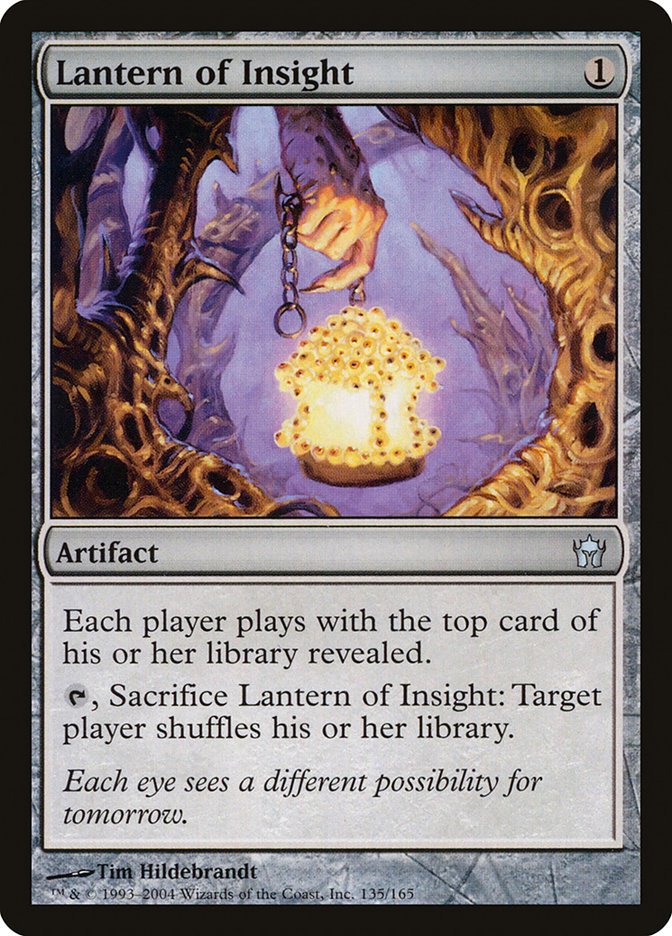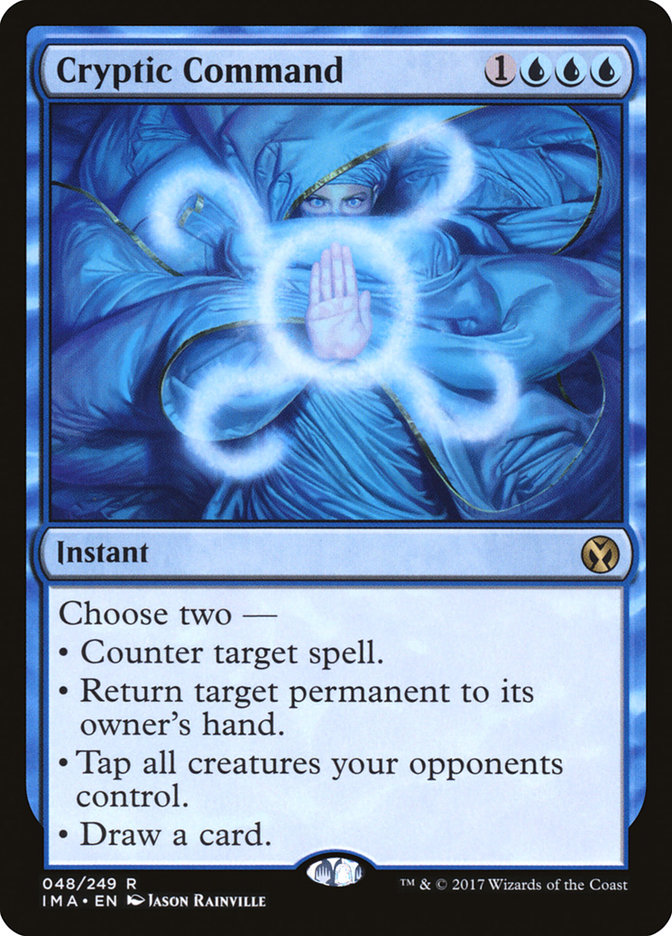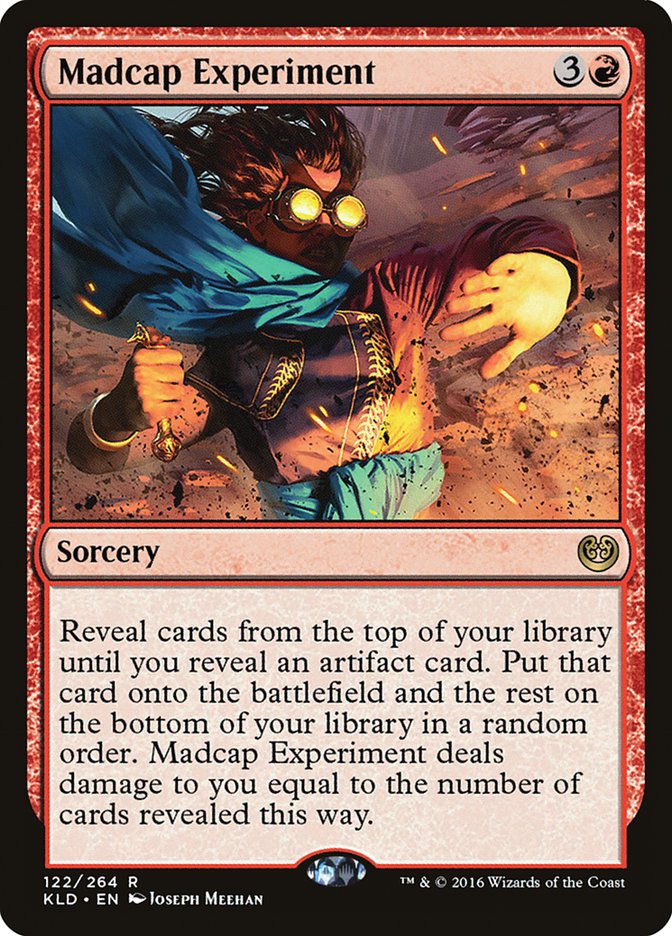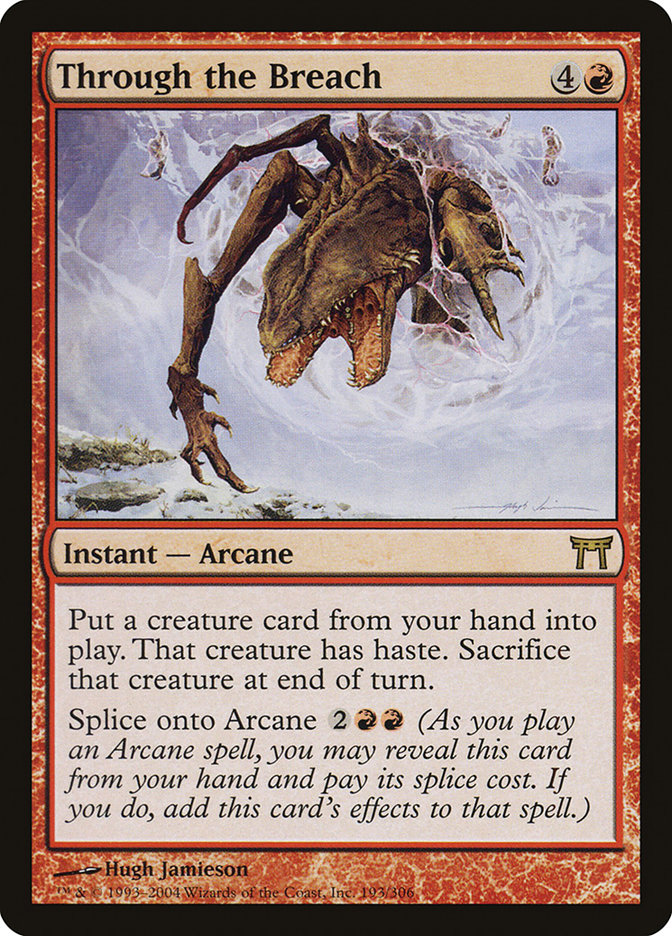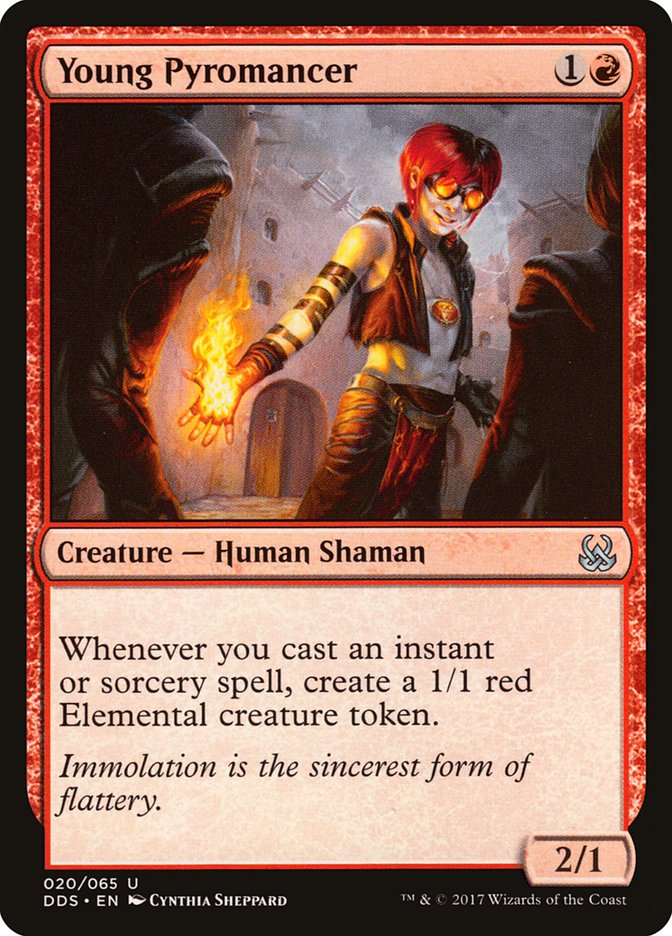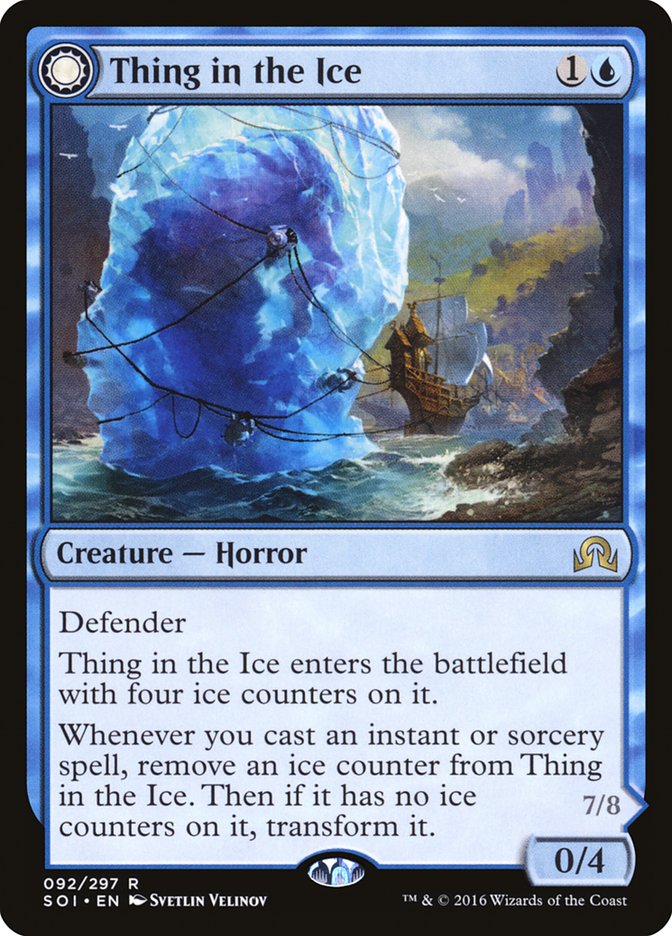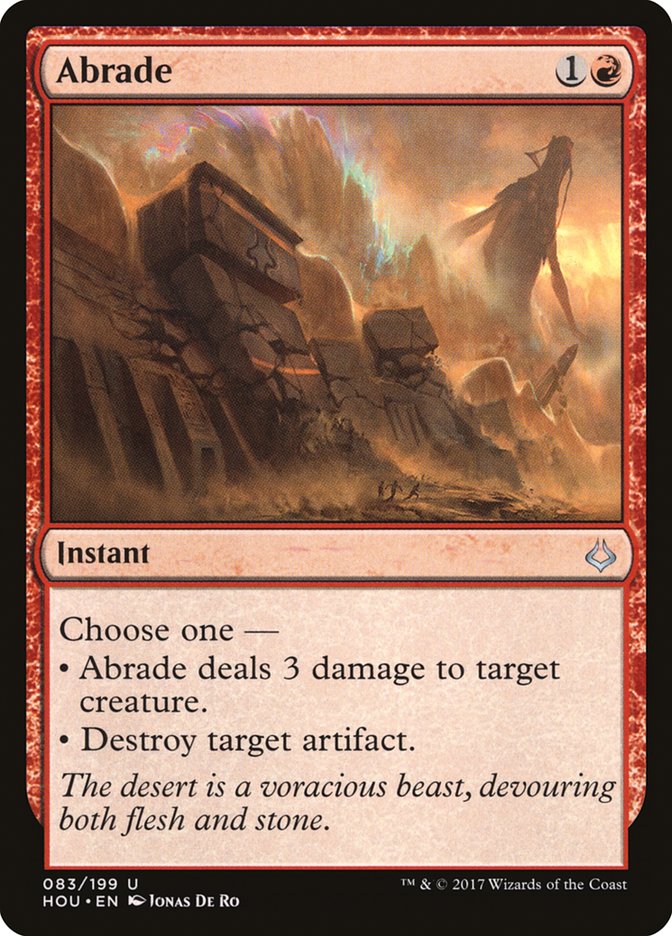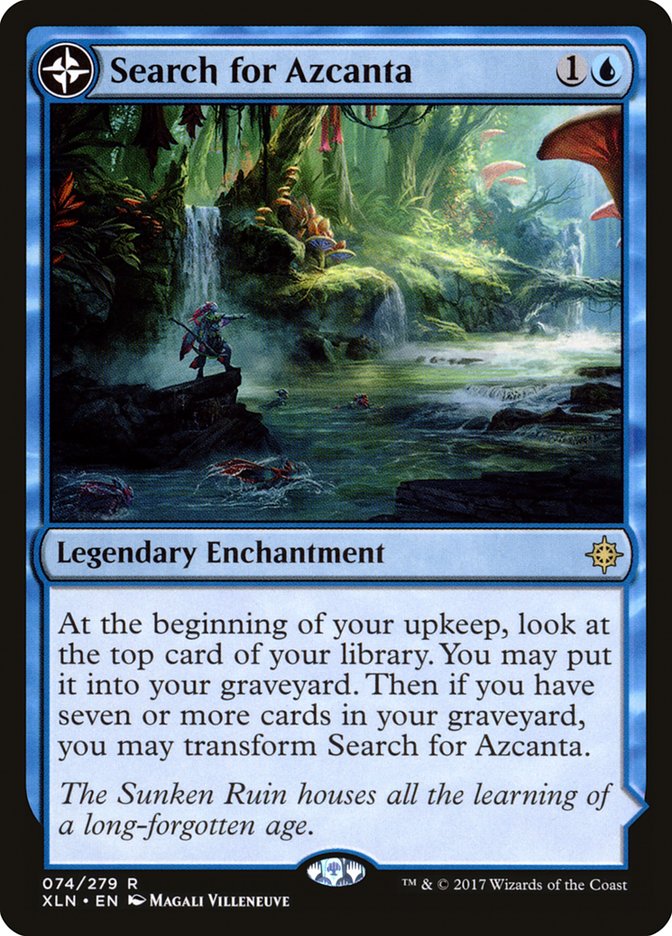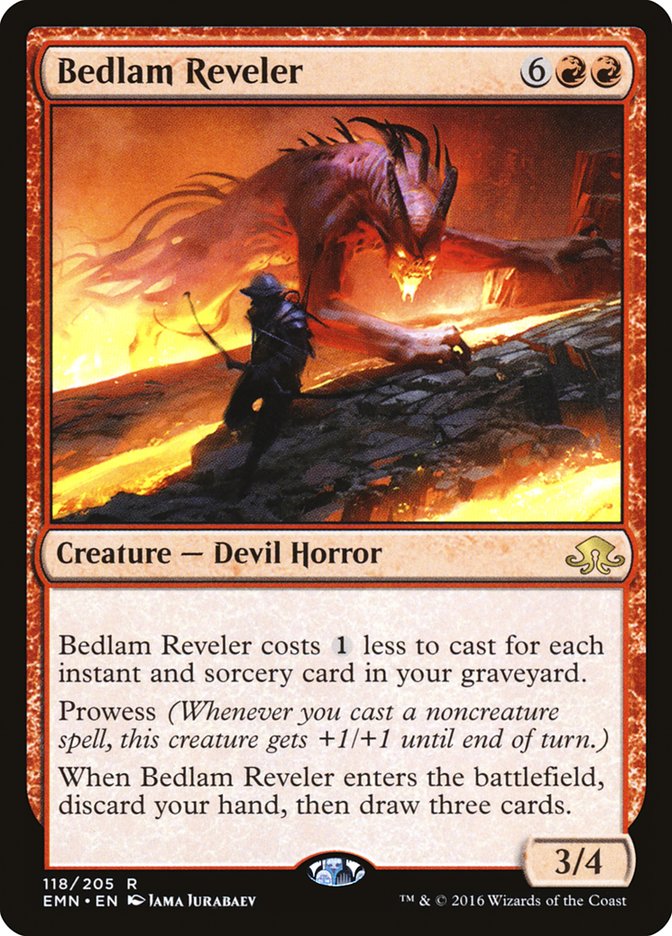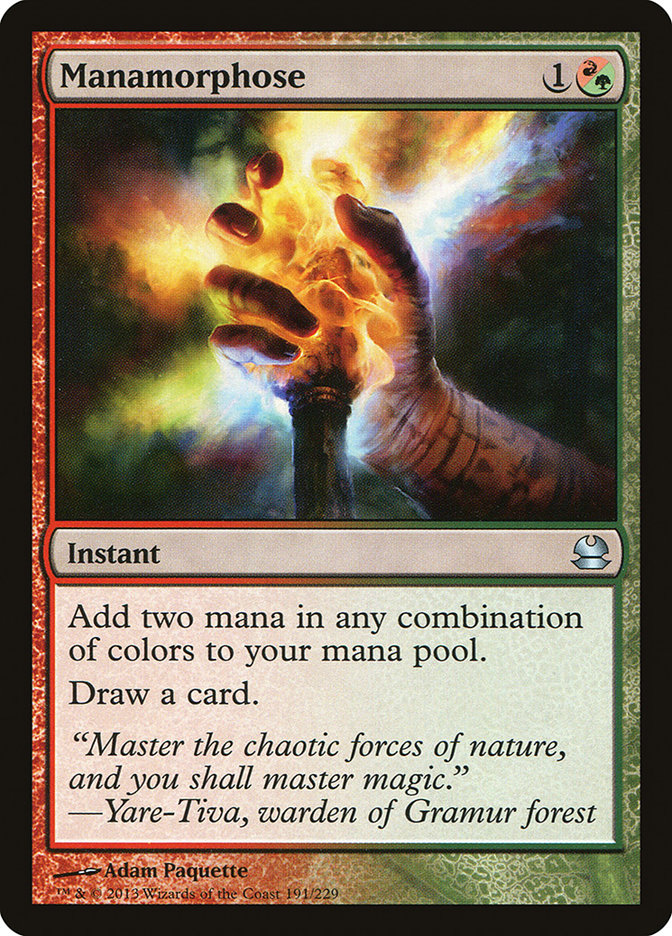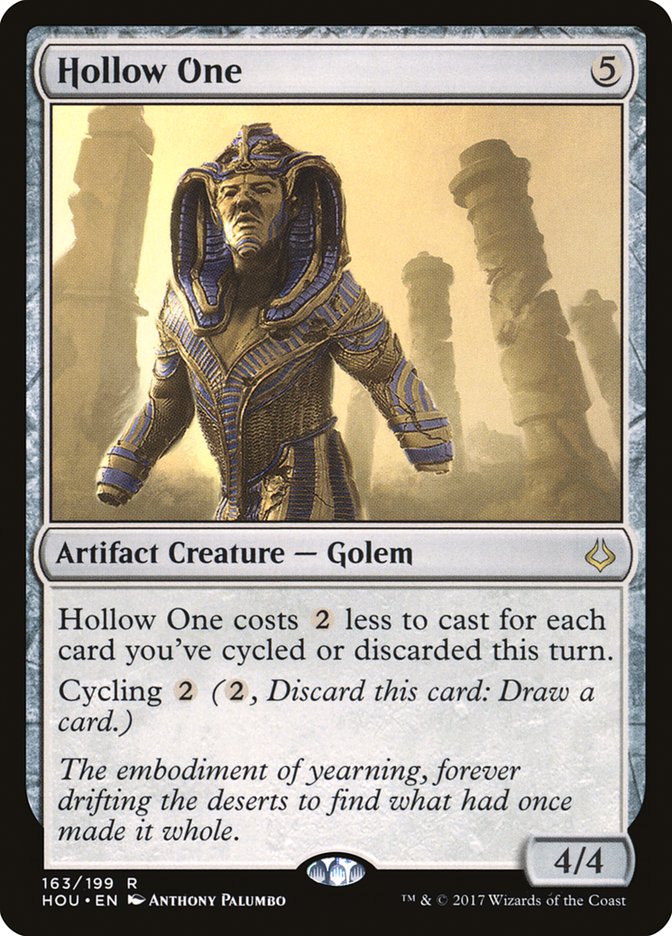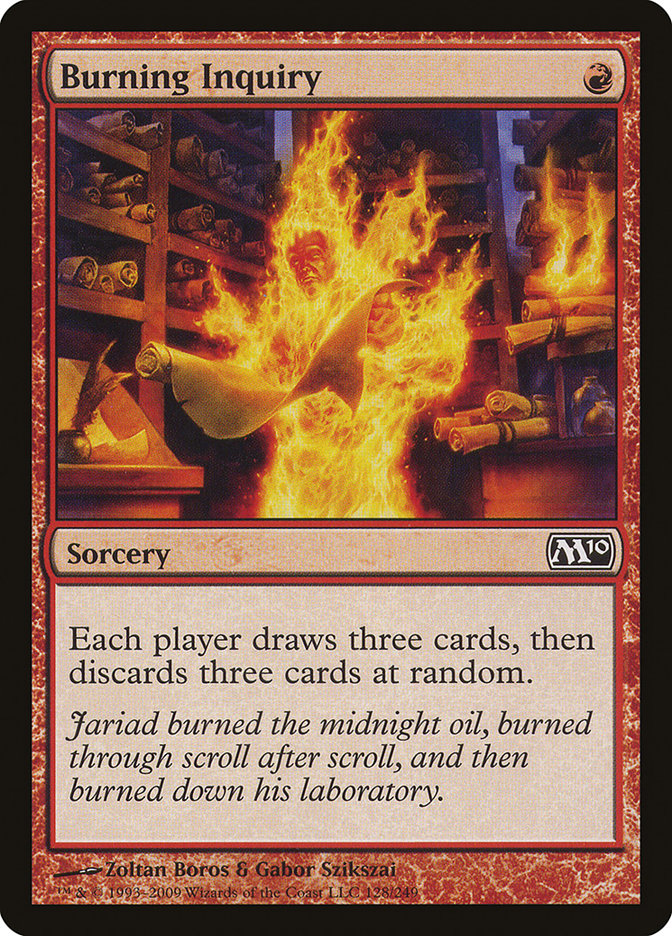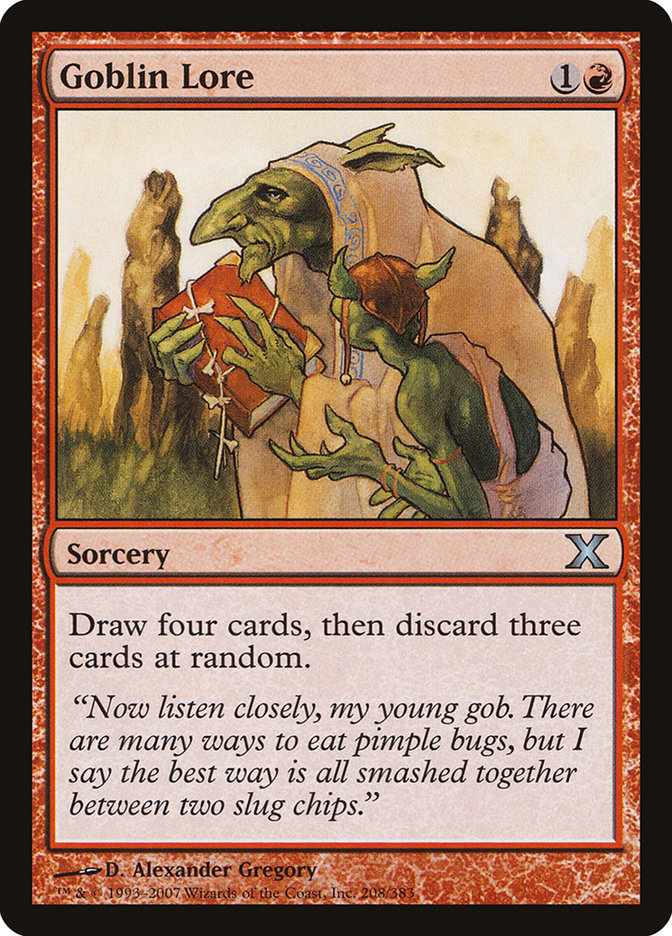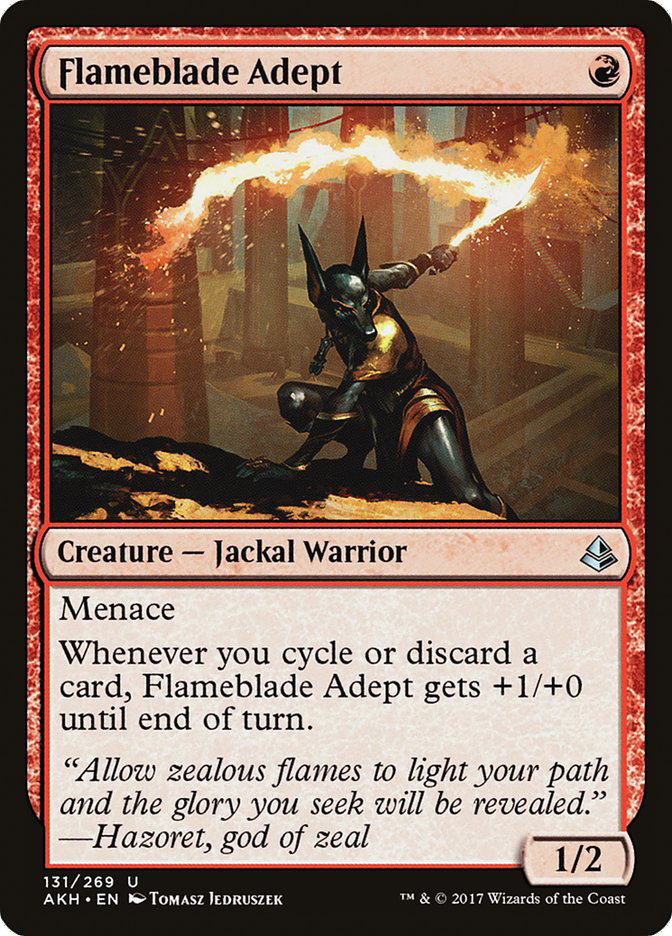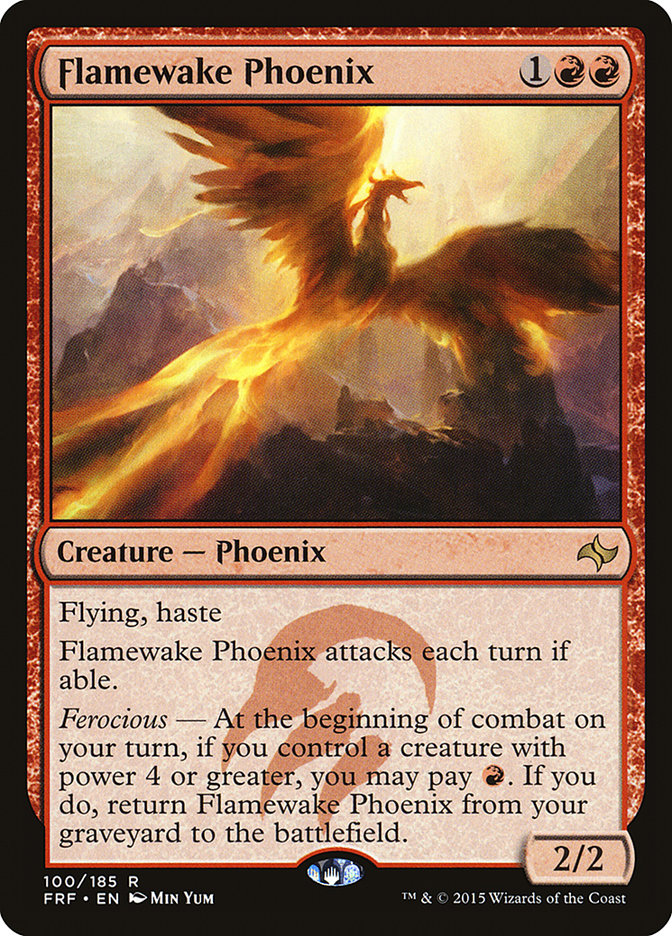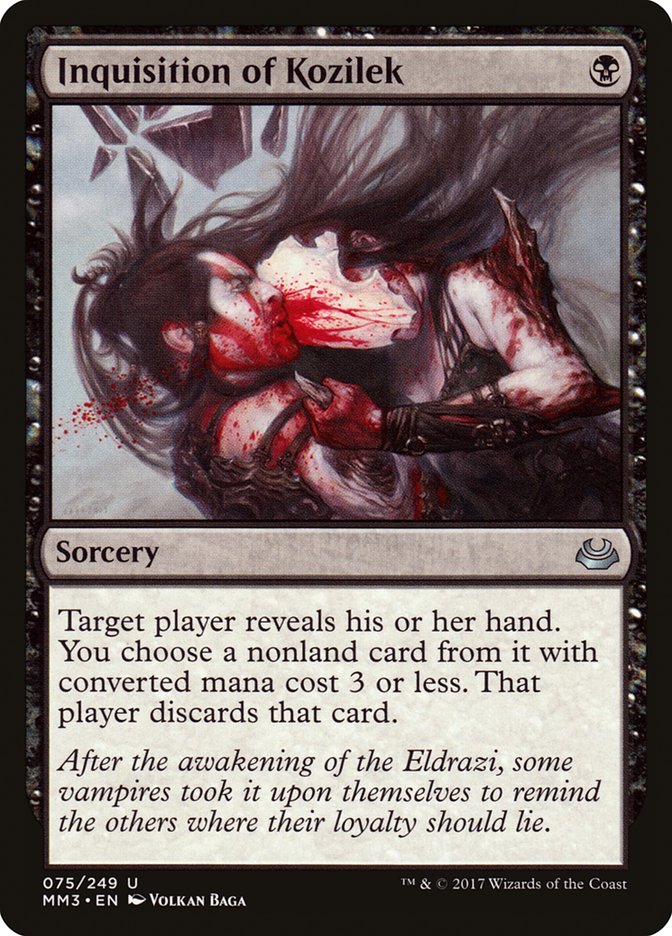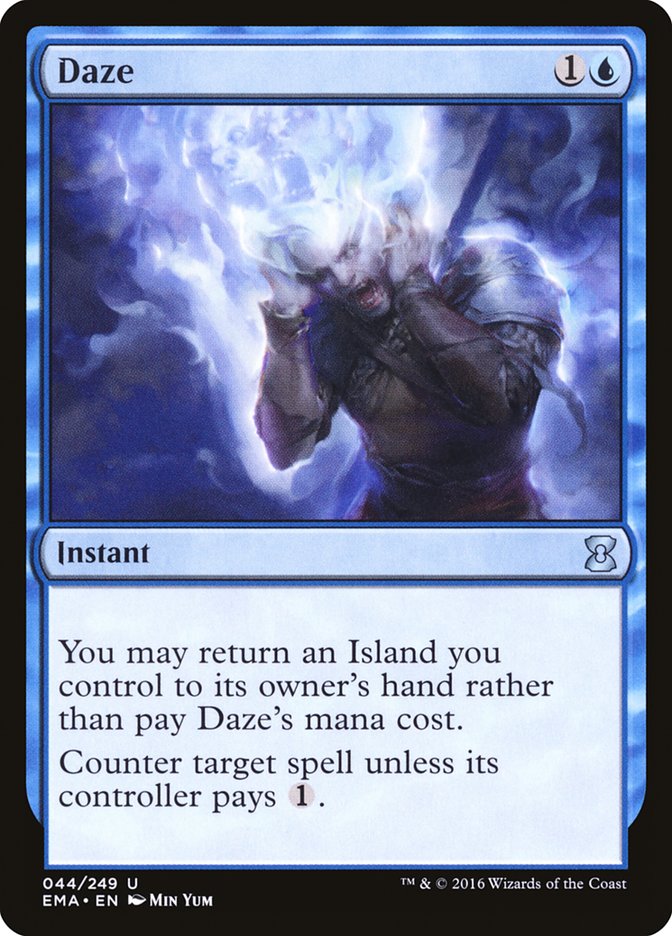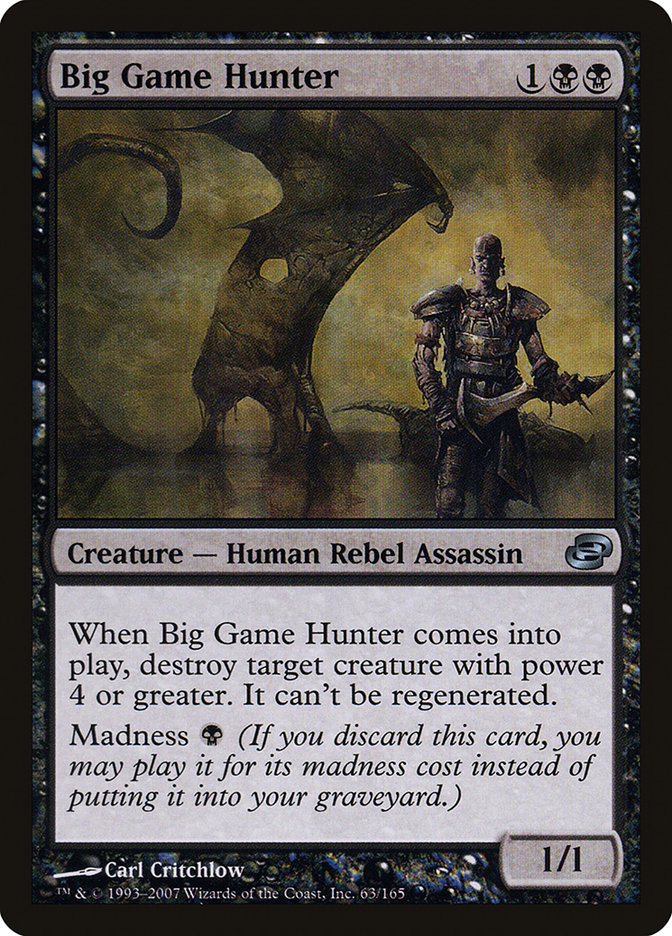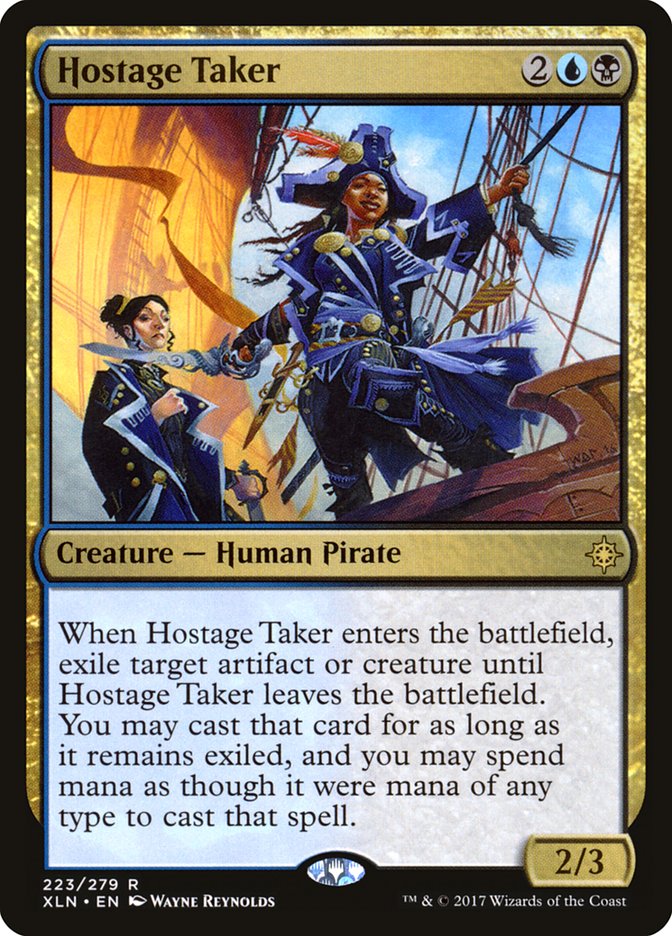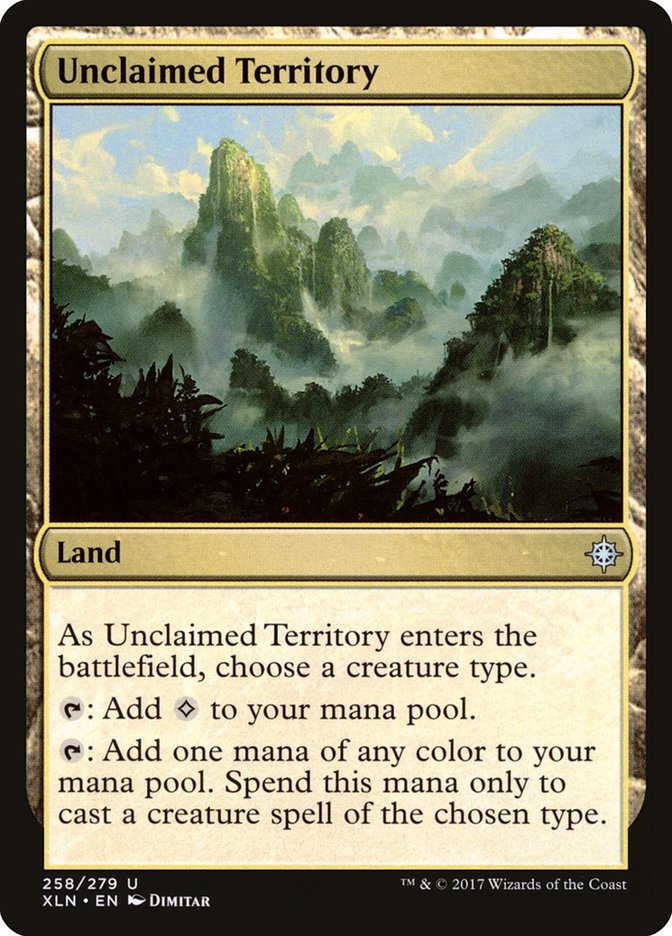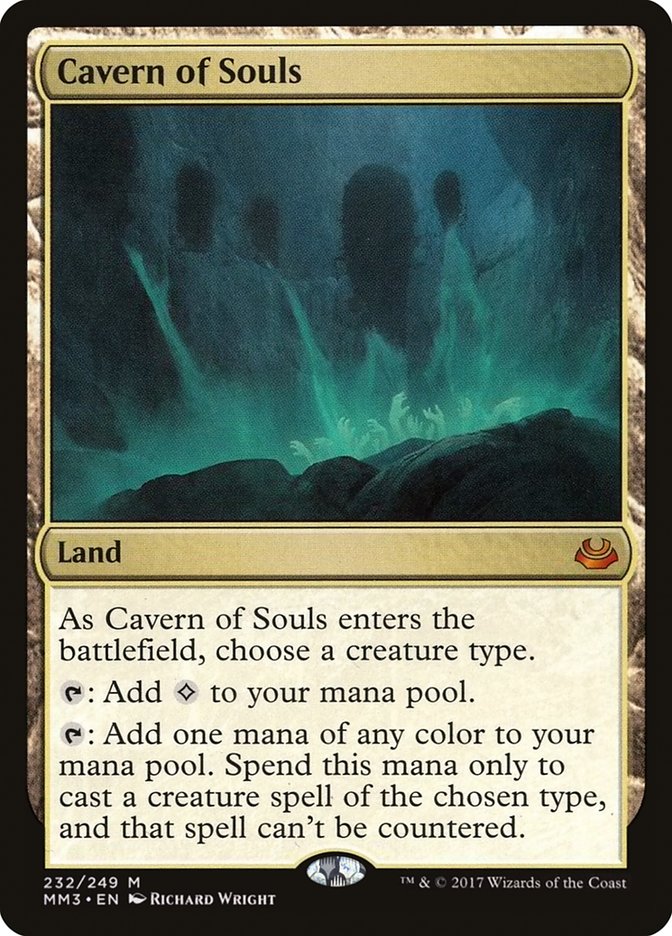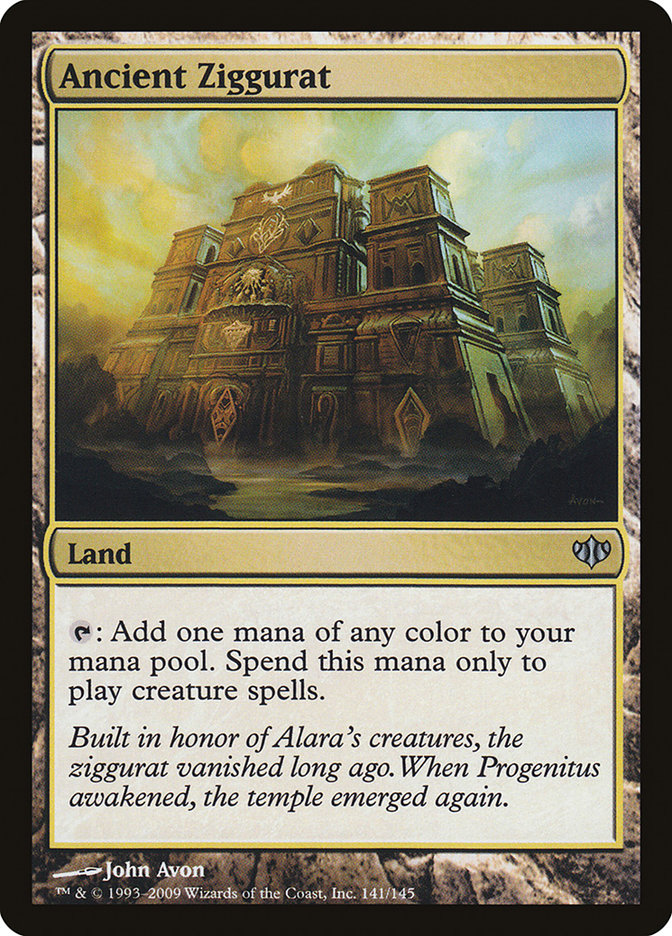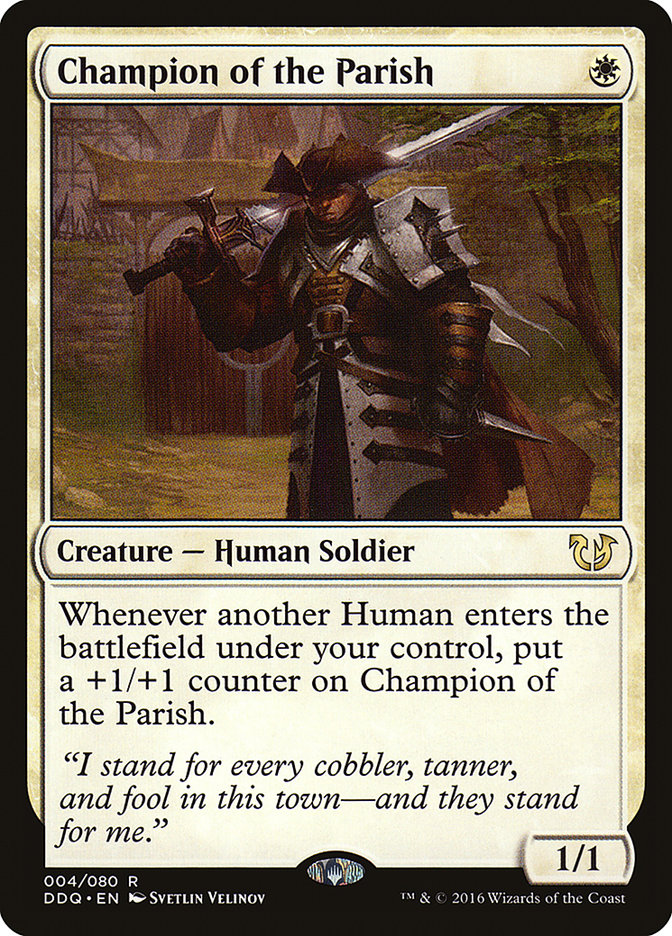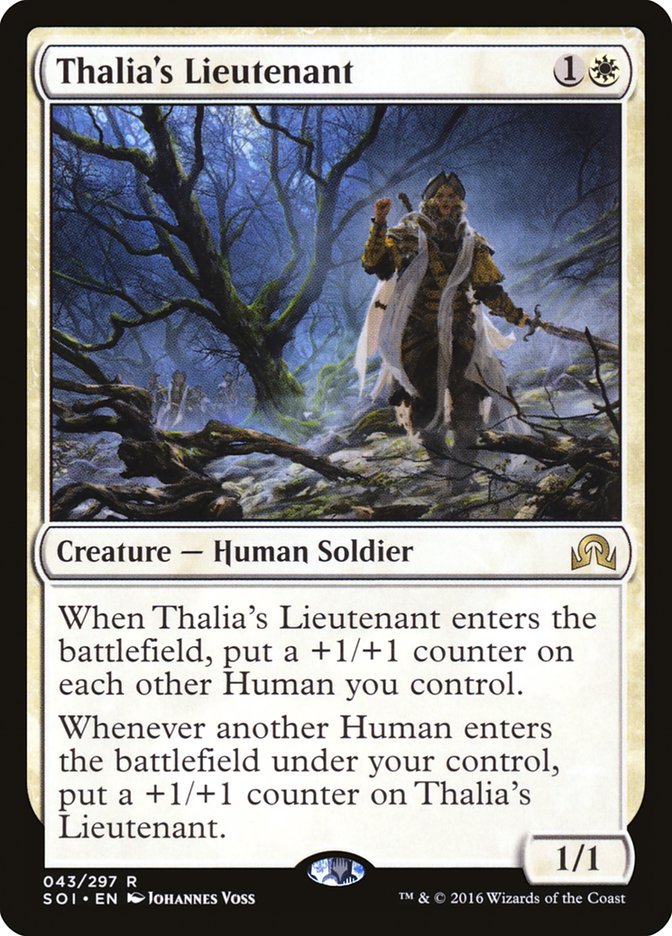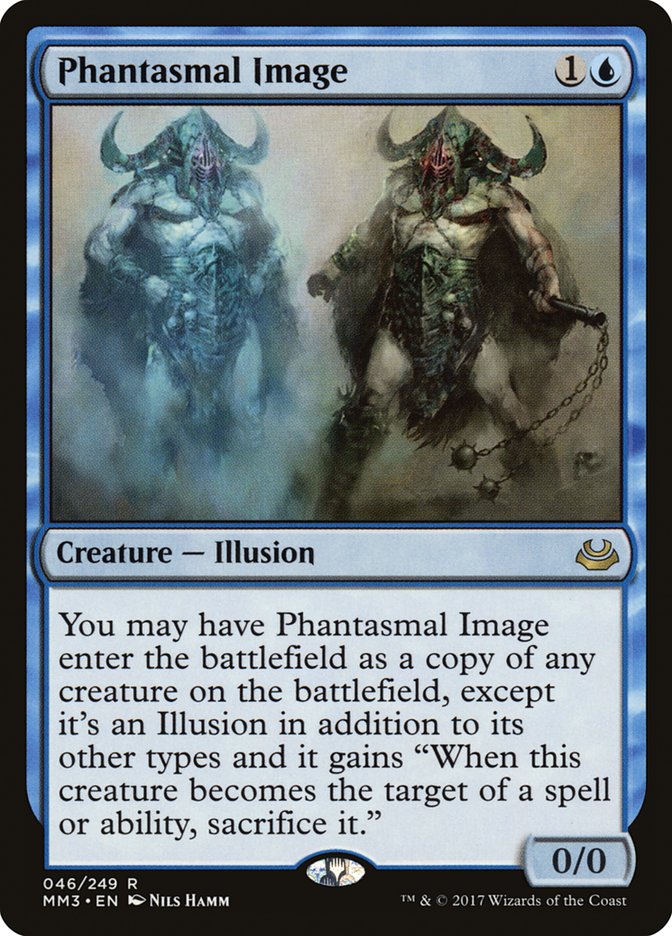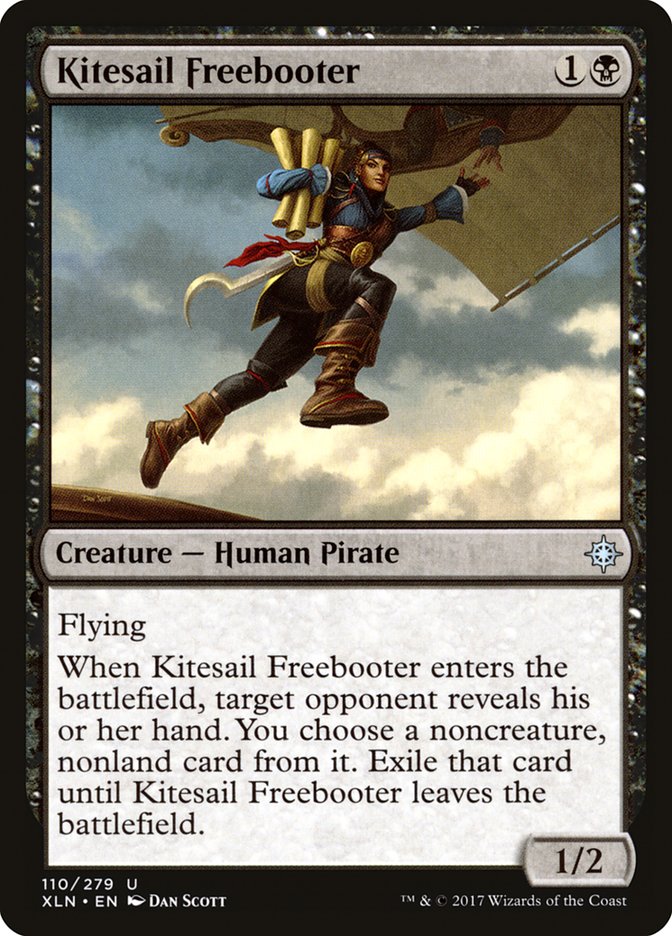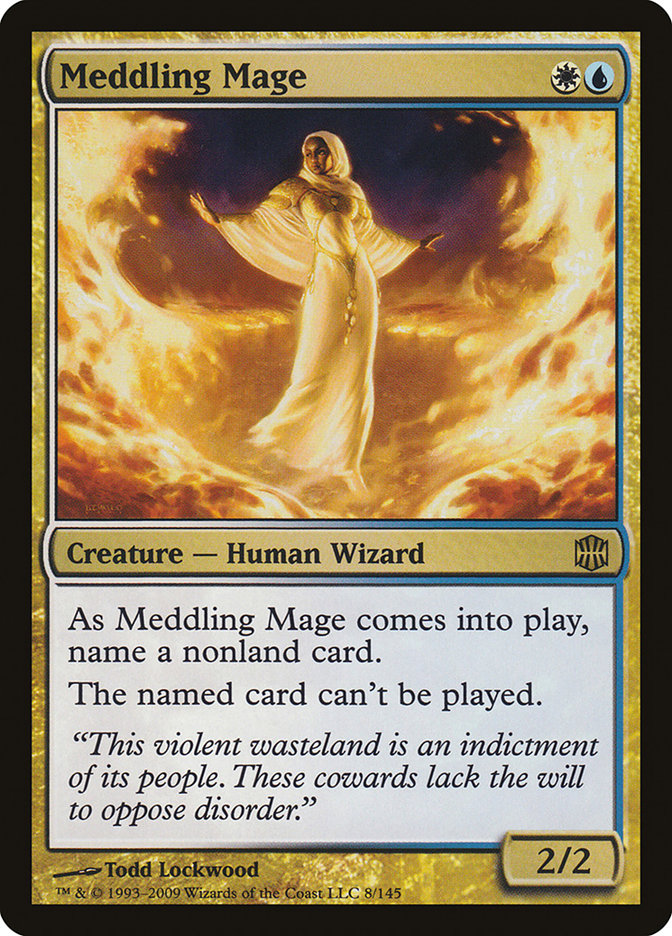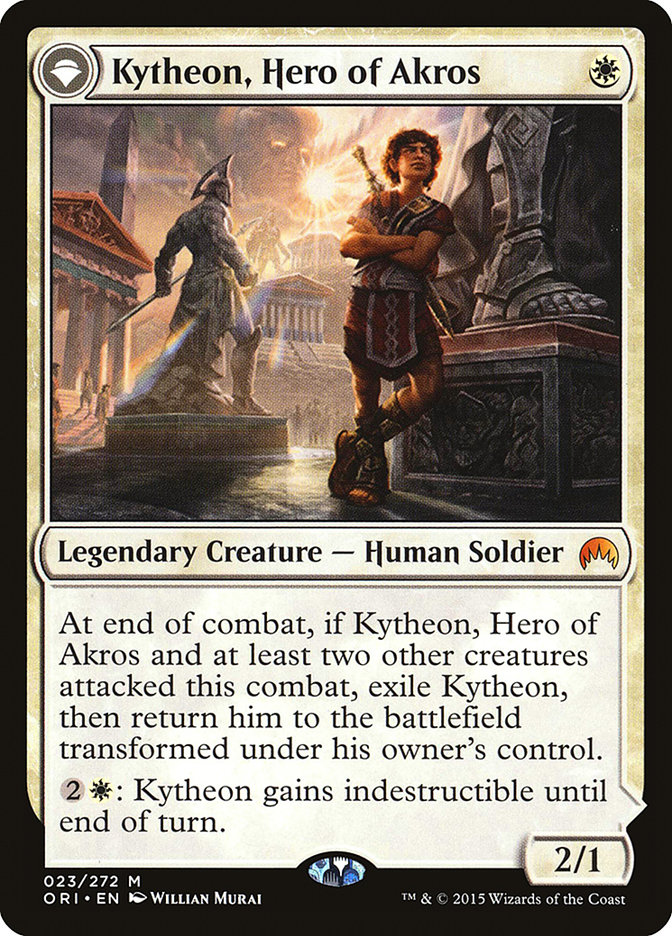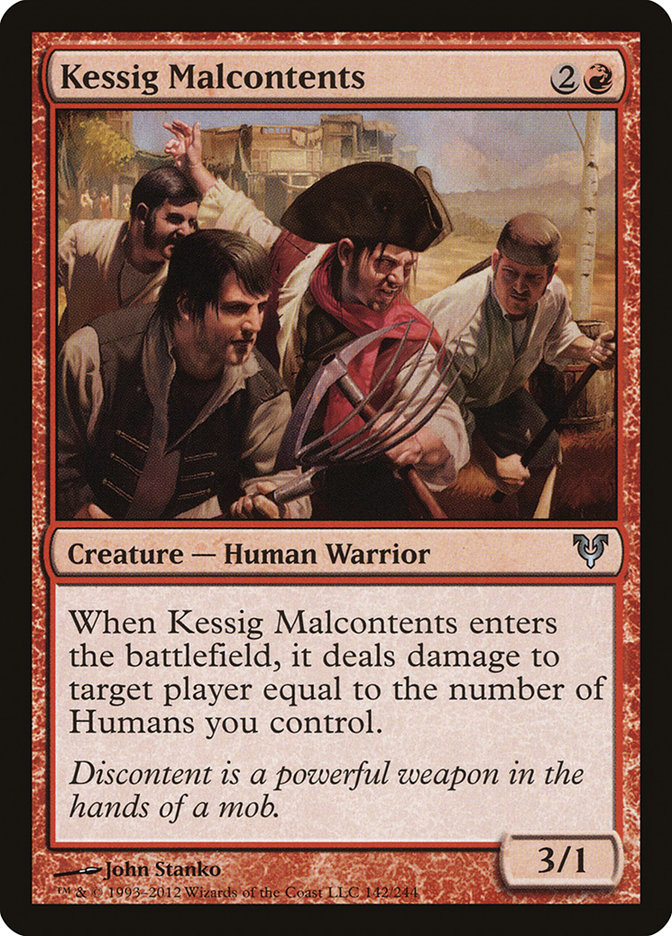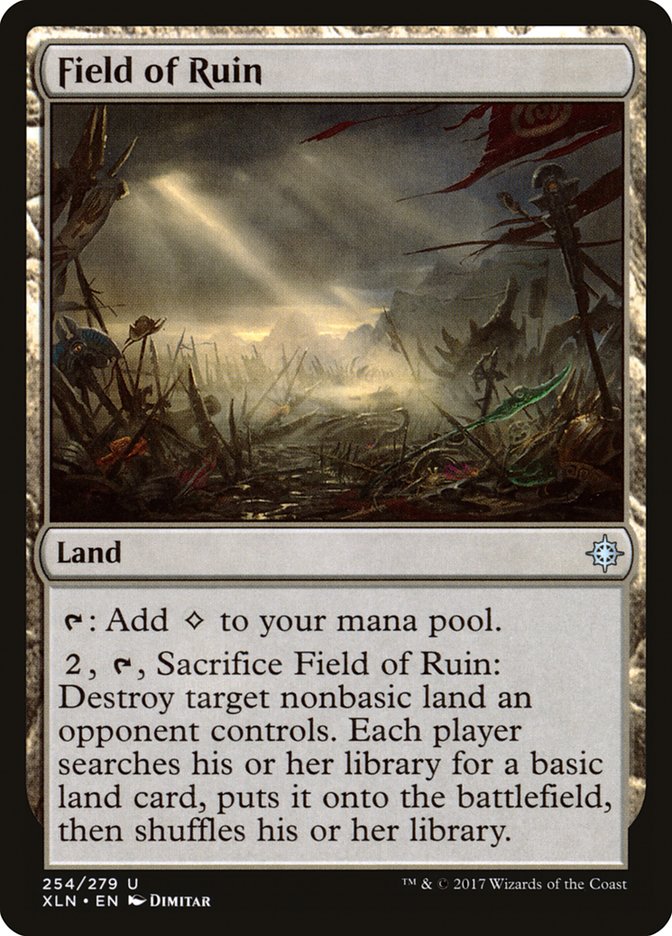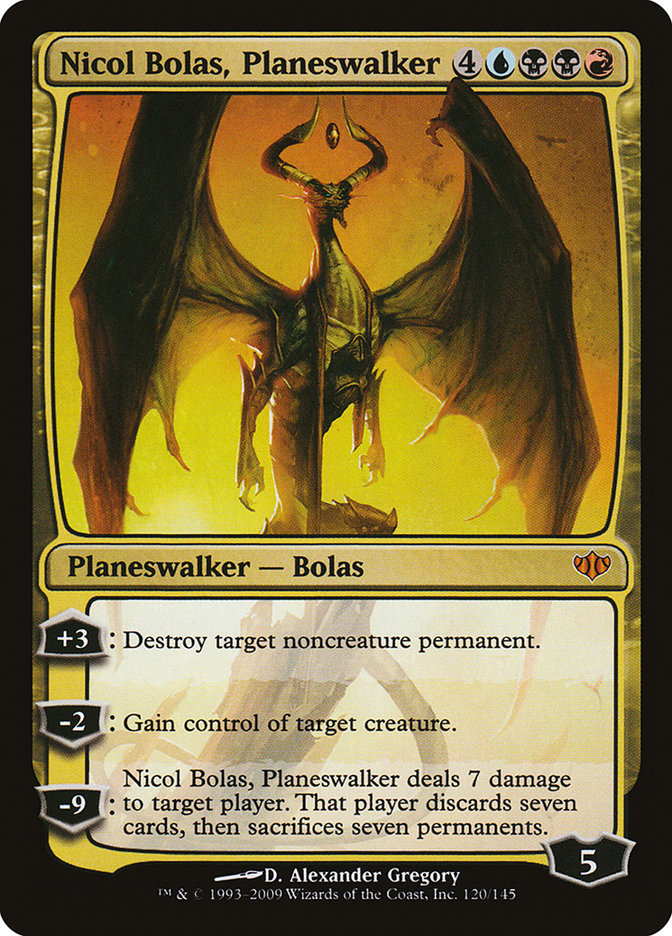Modern returned to the Pro Tour, and it did not disappoint.
Okay, mostly.
The first Modern Pro Tour since fully-powered Eldrazi Aggro ran rampant two
years ago at Pro Tour Oath of the Gatewatch, was one of great
diversity in both form and function. I was only able to collapse the
strategies into eighteen macro-archetypes, and that includes taking the
fairly large liberty of merging U/W Control, Jeskai Control, Grixis
Control, U/R Pyromancer, and U/B Faeries into one archetype, as well as
merging Abzan, G/B, and Jund. Even with all that, 11% of the field doesn’t
even fall into one of the eighteen most popular archetypes!
To start to get a feel for the Modern metagame present at the Pro Tour,
here’s a look at the Day 1 and Day 2 popularity of those eighteen
archetypes. The conversion rate listed is what percentage of the pilots
made day 2, with the important caveat that three of the first eight rounds
were Draft. The Plus/Minus category is how much the archetype was above or
below average for conversions. Finally, the Day 1 Success column is the
product of the Day 1 popularity multiplied by the deck’s conversion rate
(attempting to strike a balance between performance and sample size).
Shoutout to Hall of Famer Frank Karsten for the bulk of the metagame data.
|
Archetypes |
Day 1 Meta |
Day 2 Meta |
Plus/Minus |
Day 1 Success |
|
|
U/x Control |
11.85% |
13.31% |
70.91% |
7.76% |
4.27 |
|
9.27% |
10.58% |
72.09% |
8.95% |
3.85 |
|
|
Eldrazi Tron |
5.60% |
6.83% |
76.92% |
13.78% |
3.58 |
|
Five-Color Humans |
9.27% |
9.90% |
67.44% |
4.30% |
1.85 |
|
U/R(/W) Breach |
1.08% |
1.71% |
100.00% |
36.85% |
1.84 |
|
Tron |
6.90% |
7.51% |
68.75% |
5.60% |
1.79 |
|
1.29% |
1.71% |
83.33% |
20.19% |
1.21 |
|
|
Madcap Moon |
1.08% |
1.37% |
80.00% |
16.85% |
0.84 |
|
Affinity |
7.97% |
8.19% |
64.86% |
1.72% |
0.64 |
|
Burn |
7.33% |
7.51% |
64.71% |
1.56% |
0.53 |
|
Lantern Control |
1.94% |
2.05% |
66.67% |
3.52% |
0.32 |
|
Devoted Company |
3.02% |
2.73% |
57.14% |
-6.00% |
-0.84 |
|
Mardu Pyromancer |
2.80% |
2.39% |
53.85% |
-9.30% |
-1.21 |
|
B/G/x Midrange |
4.53% |
4.10% |
57.14% |
-6.00% |
-1.26 |
|
U/R Gifts Storm |
4.96% |
4.44% |
56.52% |
-6.62% |
-1.52 |
|
Dredge |
3.66% |
3.07% |
52.94% |
-10.21% |
-1.73 |
|
Bogles |
1.72% |
1.02% |
37.50% |
-25.65% |
-2.05 |
|
Valakut |
4.74% |
2.73% |
36.36% |
-26.78% |
-5.89 |
|
Misc |
10.99% |
8.87% |
50.98% |
-12.17% |
-6.20 |
Despite making up nearly 12% of the field, blue control was consistently
well above average nearly across the board. The only control strategy that
finished below average was U/W Control; however, that was only by a small
margin and multiple players finished 8-1-1 or better with the strategy. If
we set aside the U/W decks, the conversion rate climbs all the way up to
78.1%.
If we’re just looking to include all the Cryptic Command decks, we might
also include the ten Madcap Experiment and U/R Through the Breach combo
decks that converted a fantastic 90% of their pilots.
Some muggle-life stuff came up and I couldn’t make it to Spain this time;
however, my plan was to play the Madcap Moon list Paul Rietzl had been
tuning over the past few weeks.
Creatures (8)
Lands (22)
Spells (30)

My take is that we’re kind of getting the best of both worlds here. You get
a lot of free wins, game 1, from an unbeatable Emperion or Blood Moon.
Then, you’ve got the option to become a U/R Pyromancer deck after
sideboard.
Despite the success of U/x on day 1 of the event, there was just a single
pilot in the top 8. Pascal Vieren’s U/R Pyromancer, running Thing in the
Ice as the alternative win condition.
Pascal’s list had a lot of ones and twos that he had frequent access to,
thanks to the Opts, Serum Visions, and Ancestral Visions, on top of
Snapcaster Mage, Remand, Electrolyze, and Cryptic Command.
Creatures (10)
Lands (21)
Spells (29)

That’s a pretty wide range of interactive cards, including the notable
recent addition of Standard standout Abrade.
You can only play four Lightning Bolts, and having maindeck answers to
Ensnaring Bridge, Lantern of Insight, Platinum Emperion, Cranial Plating,
and Aether Vial helps make up for the lack of Kolaghan’s Command, compared
to Grixis builds.
With Lantern’s victory, in the hands of Luis Salvatto, Abrade’s stock is
likely on the rise (at least until they ban Mox Opal). Here’s the
champion’s build in all its excruciating glory:
Lands (17)
Spells (43)

Salvatto’s list continues the recent adoption of Whir of Invention,
capitalizing on the abundance of improvise enablers and helping set up the
lock. Additionally, just having such easy access to Grafdigger’s Cage and
Witchbane Orb really shifts the balance of power in some combo matchups.
While we’ve already seen a lot of Search for Azcanta in various blue
control or aggro-control decks, it also makes for a powerful backup plan in
Lantern. It’s not just that it searches up the lock and helps grind through
artifact destruction. It’s also an enchantment that transforms into a land,
meaning it’s not vulnerable to cards like Stony Silence, and in fact, can
actually dig into your Nature’s Claim, Abrupt Decay, and Maelstrom Pulse!
I think a lot of people remember how fragile the old builds of Lantern were
and might be underestimating just how much redundancy Whir of Invention
really offers. Just having three Kolaghan’s Commands in your maindeck
doesn’t ensure victory or anything.
Sadly, our hero, one of the best players in the world and one of the best
deckbuilders of all-time, Gerry Thompson, was reminded of this in the
finals. It’s been a difficult week, to say the least, but Gerry was the
pinnacle of skill and class. Gerry was already widely regarded as one of
the coldest out there, and with another finals appearance less than a year
after his dominating victory at Pro Tour Amonkhet, the evidence
continues to mount that his game really has reached a new level.
Here’s the Mardu Pyromancer list he took to the ball:
Creatures (8)
Planeswalkers (1)
Lands (20)
Spells (31)

Bedlam Reveler has historically been primarily a U/R card, but relatively
recently, it’s been showing up in this relatively new breed of Mardu that
has an almost tokens-like quality to it.
One of Gerry’s greatest strengths has always been his ability to tune
lists, and this one is no exception.
-
A second Blood Moon main?
-
The miser’s Manamorphose? Remember, this is a Blood Moon deck with
no basic Plains. -
Adding a Liliana of the Veil to both the maindeck and the
sideboard? Among the countless options she enables, she also
provides another way to discard Lingering Souls under Blood Moon
(to go along with the Bedlam Revelers and Collective Brutalities). -
Shaving a couple removal spells compared to industry standard?
-
The exact mix of two Molten Rains, one Fulminator Mage, and one
Ghost Quarter in the side, instead of more Blood Moons like most
people? -
Three Surgical Extraction and two Nihil Spellbombs?
Let me just say you generally don’t just “start” with one copy of
Manamorphose in your list. Gerry’s one of the hardest working and smartest
working to ever do it and it shows.
The extra graveyard hate was generally a good call this weekend. In
addition to the countless Snapcaster Mage decks and to an extent, Lantern,
there was also Dredge, Counters Company, Storm, and the relatively recent
upstart, B/R Hollow One.
Taking advantage of the Hollow One’s synergy with Faithless Looting,
Burning Inquiry, Goblin Lore, Collective Brutality, and Street Wraith, this
strategy plays a very Dredge-adjacent game, flooding the battlefield with
resilient and aggressive threats that circumvent a lot of traditional forms
of interaction.
Ken Yukuhiro’s latest big finish was a textbook example of this archetype:
Creatures (24)
- 4 Street Wraith
- 4 Bloodghast
- 3 Gurmag Angler
- 4 Flamewake Phoenix
- 1 Tasigur, the Golden Fang
- 4 Flameblade Adept
- 4 Hollow One
Lands (18)
Spells (18)

In addition to the one or zero-cost 4/4s, Yukuhiro’s list gets paid off
from the Flameblade Adepts and Gurmag Anglers, with Bloodghast and
Flamewake Phoenix ideal cards to pitch.
There aren’t quite enough recursive creatures to run Prized Amalgams too,
but I can’t help but feel like we’re close.
Sometimes I worry that Modern is too reliant on Inquisition of Kozilek and
Thoughtseize to balance the format. I kind of wish there were a few more
options in other colors.
Maybe someday…
As for the sideboard, it’s not crazy-new or anything, but Big Game Hunter
never fails to delight.
With so many discard outlets, it’s very commonly a one-mana kill spell that
leaves a body behind. It also kills stuff that Lightning Bolt and Fatal
Push can’t always reach.
Speaking of Inquisition/Thoughtseize decks, yet another strategy relying on
the unholy duo is the format’s (former?) boogeyman, Death’s Shadow.
Creatures (14)
Planeswalkers (2)
Lands (18)
Spells (26)

While Grixis Death’s Shadow was two and a half times as popular as Traverse
builds, the Traverse lists were substantially more successful, both in
reaching Day Two and finishing well on it.
The coolest new addition to the deck is definitely Hostage Taker. It’s not
just a 187 kill spell you can tutor for with Traverse; it also adds a much
needed anti-artifact plan!
Despite not taking the title, I have to imagine Street Wraith is on the
short-list of most likely cards to get banned. I’m betting it dodges the
axe this time, but I won’t be surprised when it eventually does get hit.
Continuing our walk through the Inquisition/Thoughtseize metagame,
five-time Grand Prix Champion Reid Duke added to his already impressive
resume’ with his fourth final day (including a World Championship finals
appearance and two other top 8s, as well the widely agreed most
skill-testing and talent-demonstrating Pro Tour of all-time, PT Journey into Nyx). He isn’t even on the ballot until 2019, but
Duke continues to demonstrate why he is one of the game’s most respected
players.
Creatures (13)
Planeswalkers (5)
Lands (21)
Spells (21)

Reid has a lot of experience with B/G/x midrange decks, so it’s not
surprising to see him succeeding with a well-tuned list.
-
Going down to two Abrupt Decays?
-
Maindeck Nihil Spellbombs?
-
The miser’s Tireless Tracker?
-
Shaving a Lingering Souls?
-
Two Treetop Villages and a Shambling Vent?
-
Five Lilianas main, with a sixth in the board?
Reid has always been one to play more Planeswalkers than most!
Finally, rounding out the Top 8, the only strategy to put multiple people
into the final day: Five-Color Humans.
With twelve pain-free “Utopias,” the Five-Color Humans strategy burst onto
the scene with a number of big SCG Tour finishes. There was a little bit of
speculation as to whether this strategy had what it took to survive once it
no longer had the element of surprise on its side. Well, despite being one
of the most popular decks in Spain, it was also one of the most successful.
Up first, World Cup champion, Andrea Mengucci, whose three PT Top 8s even
include an appearance in the aforementioned PT Journey into Nyx.
Creatures (37)
- 4 Meddling Mage
- 4 Noble Hierarch
- 4 Phantasmal Image
- 4 Champion of the Parish
- 4 Thalia, Guardian of Thraben
- 4 Mantis Rider
- 1 Kytheon, Hero of Akros
- 4 Reflector Mage
- 4 Thalia's Lieutenant
- 4 Kitesail Freebooter
Lands (18)
Spells (5)

The vast majority of the slots in this deck have been pretty well worked
out, generally consisting of nothing but Humans and mana (since this
manabase is so poor at casting anything besides Humans).
Champion of the Parish and Thalia’s Lieutenant are absolutely disgusting in
this deck, and you really need at least one or the other, or an Aether
Vial, if you want to come out of the gates hard.
It’s not trivial to cast, but Phantasmal Image copying either of the
Champion or the Lieutenant is just too good to pass up. Besides, even if
the first Cavern or Territory names Human, the second one can name
Illusion.
It’s not going to cover everything, but we do have access to a pretty
reasonable mix of disruption for a deck so fast and aggressive.

Yeah, because mana requirements like these are totally normal…
Kytheon is a surprising added bit of spice. There are plenty of two-drops
we could play, but Mengucci was disciplined and opted for a slightly
smoother mana curve. Javier Dominguez, on the other hand, solved the
problem of the last slot by going the other way (which also makes for a
smoother mana curve, since the one-drop was frequently going to make for an
efficient turn 3 anyway).
It’s not the pushiest rate ever, but it can provide some much appreciated
final points of damage, letting him win races by a turn against combo decks
that thought they had another turn.
Creatures (37)
- 4 Meddling Mage
- 4 Noble Hierarch
- 4 Phantasmal Image
- 4 Champion of the Parish
- 4 Thalia, Guardian of Thraben
- 1 Kessig Malcontents
- 4 Mantis Rider
- 4 Reflector Mage
- 4 Thalia's Lieutenant
- 4 Kitesail Freebooter
Lands (18)
Spells (5)

Alright, before I bounce, I want to give props to Gabriel Nassif and Corey
Burkhart for making us control players proud.
First, Nassif’s U/W Control deck (which he may have streamed once or twice
before the PT):
Creatures (5)
Planeswalkers (3)
Lands (25)
Spells (27)

Speaking of guys that know how to build and tune decks…
What a sick array of one-ofs! And that’s just the maindeck…
Meanwhile, Corey Burkhart continues to carry the Grixis mantle, with his
latest offering in the style most pros refer to as “Corey-style Grixis.”
Creatures (7)
Lands (25)
Spells (28)

With a playset of Cryptic Commands, a playset of Kolaghan’s Command, a
playset of Snapcaster Mage, and a playset of Field of Ruin, Corey is a man
who knows what he wants in life.
Search for Azcanta, maindeck Countersquall, multiple Logic Knots, Liliana’s
Defeat in the sideboard, how can you not love this list?
Nicol Bolas would be proud…


